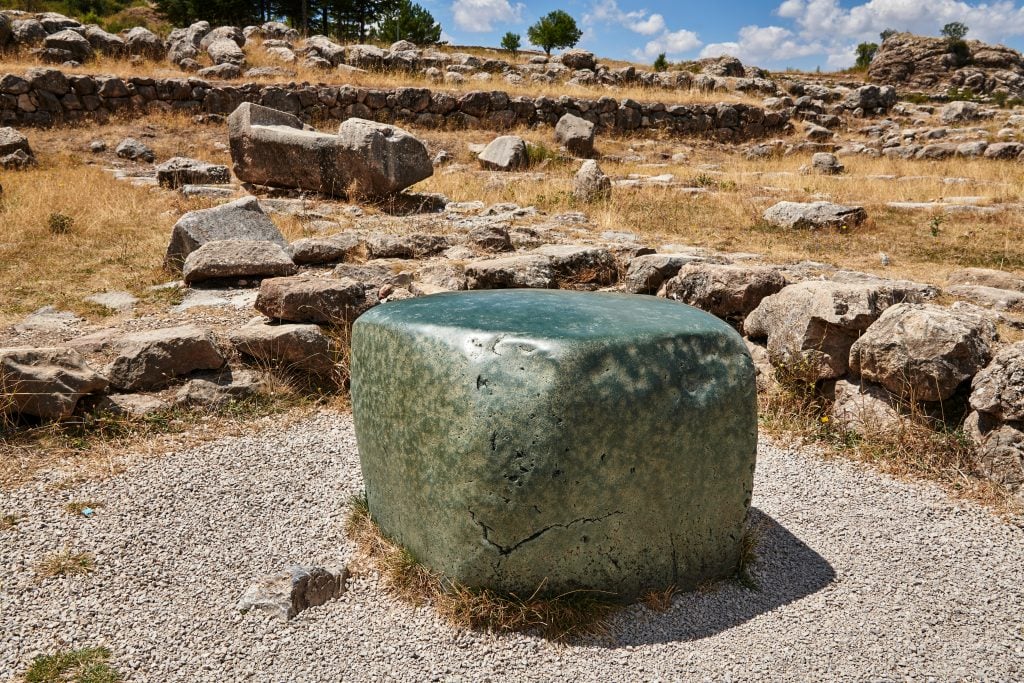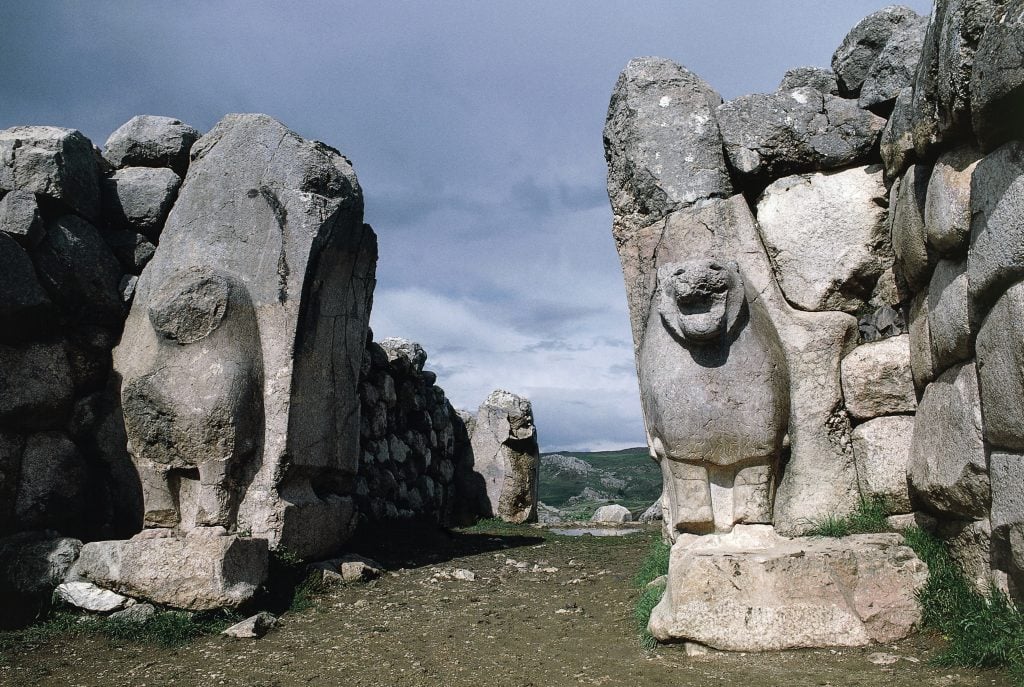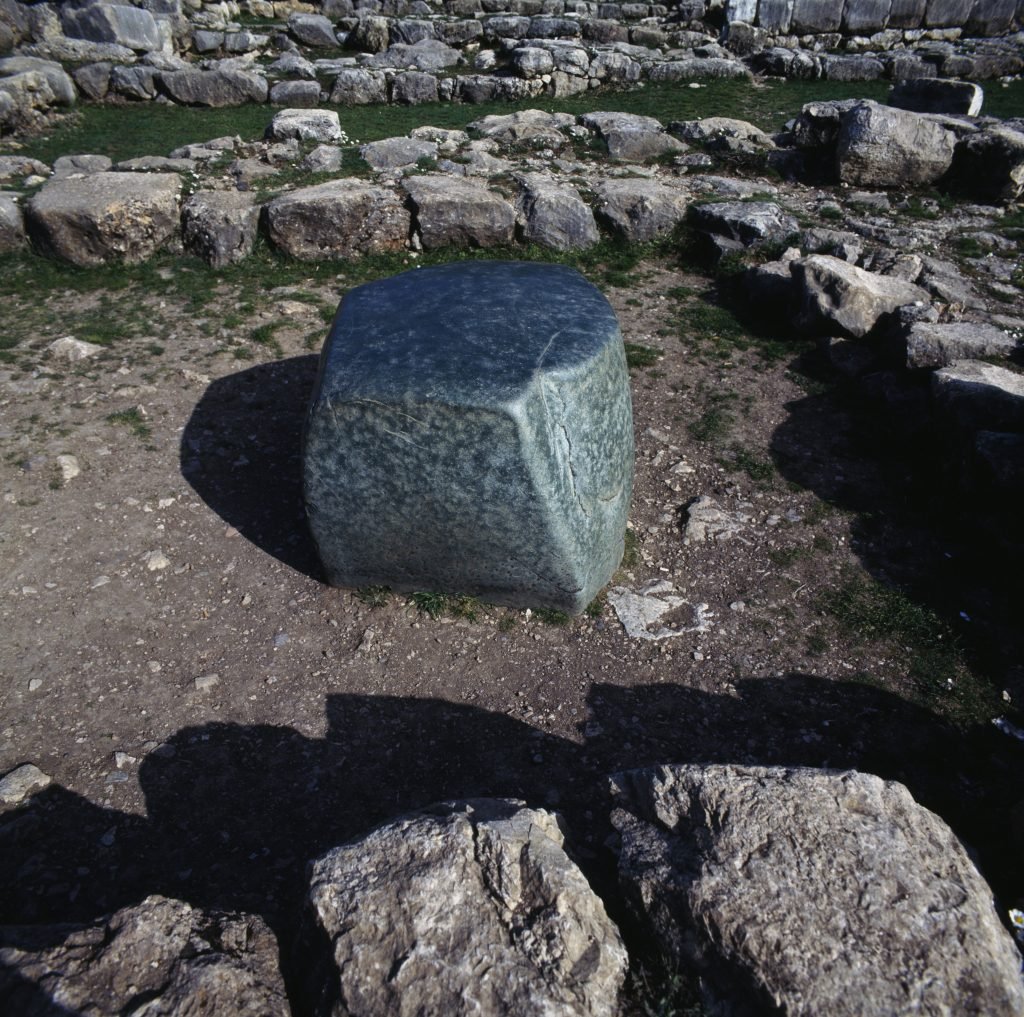Archaeology & History
The Hunt: What Secrets Lie in the Hattusa Green Stone?
This piece of polished rock is located in the ruins of an ancient Turkish city.

To the locals in Boğazkale, central Turkey, the smooth green boulder lying in the nearby ruins of an ancient temple has magical powers. It is a wishing stone, granting whomever places their hands upon it their most secret desires. To archaeologists, the truth of the Hattusa Green Stone’s historical purpose remains a complete mystery.
The ruined temple lies within what remains of Hattusa, the capital city of the Hittite empire. The Hittites formed one of the first major civilizations of the late Bronze Age, settling in modern-day Turkey in the second millennium B.C.E. Western Archaeologists first took an interest in Hattusa, now a UNESCO heritage site, in 1834, and it has continued to be the subject of excavation and investigation ever since. The earliest known surviving peace treaty, the Egyptian-Hittite Silver Treaty, was uncovered at the city.

Lions’ Gate set in the walls of the ancient city of Hattusa, capital of the Hittite empire, in Bogazkale, Turkey. Photo by DeAgostini/ Getty Images.
Hattusa’ marvels include carved sphinxes, a gate guarded by two stone lions, and a Grand Temple. The Grand Temple is the best-preserved Hittite temple in existence, dating as far back as the 13th century B.C.E. It was dedicated to the empire’s supreme deity, the storm god Teshub, and his companion, the Sun goddess Arinna.
The enigmatic Hattusa Green stone rests eternally in a room near the temple’s main entrance, exposed to the elements and the yearning hands of curious visitors. This cubic, 2,200 pound piece of polished rock, is either serpentinite or nephrite (jade). It is the only green stone anywhere in the region. The boulder’s placement at the very front of a temple suggests a religious significance, but experts have been unable to conclusively determine its purpose or its origins. Some experts speculate the stone may have been transported from the Taurus mountains, over 300 miles to the south of Hattusa.

The famed green square stone in the ancient city of Hattusa, capital of the Hittite empire. Photo by DeAgostini/ Getty Images.
As for its purpose, it may have simply been the base for a statue. Others believe it may have been a throne where the king sat during religious ceremonies. It could also have served as a ceremonial altar. The Hittites had a spiritual connection to celestial objects, with over 50 found documents relating to astronomical or astrological subjects. One theory suggests the stone may have been used to track the passing of time and the changing of the seasons.
In reality, all of these theories are guesswork as there seems to be no definitive evidence of the alien rock’s historical function. The stone’s true identity may remain hidden forever. In contemporary times, it serves as a memorial to the unknowable secrets of the past, and their infinitely compelling power over mankind.
The Hunt explores art and ancient relics that are—alas!—lost to time. From the Ark of the Covenant to Cleopatra’s tomb, these legendary treasures have long captured the imaginations of historians and archaeologists, even if they remain buried under layers of sand, stone, and history.





